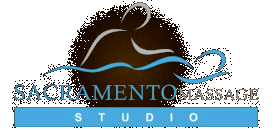Bodywork And Exercise
Increase Body Awareness While Increasing Your Activity – by Ruth Werner
You have to give us credit: as a culture, Americans are incredibly interested in getting Bodywork And Exercise. We invest every year in new diets, exercise programs, and supplements for weight loss and improved energy. Low-range estimates suggest that Americans spend about $2.6 billion each year on gym memberships alone.
We also tend to pitch full speed into any given commitment. If we’re going to get fit, by golly, we’re going to do it now, regardless of how long it took us to get into our current state. We don’t do things by half measures, and moderation is not in our nature. So how do we keep ourselves injury-free while honoring our commitment to exercise and get healthy?
Does It Have to Be All or Nothing?
We all know that starting an exercise program doesn’t actually mean we’ll finish it. When we throw ourselves into an ambitious new routine, we are likely to overdo it and get hurt. Then, we get discouraged, and may give up entirely, only to start the cycle over in another year or so.
Overdoing things in the gym or on the sports field seems to appeal to our competitive spirit–especially when we’re surrounded by others who all seem to be doing better than we are. Combine this kind of human drive with poorly trained athletic trainers who give bad advice about form, pacing, and effort, and we have a recipe for potential problems.
Exercise is only effective when it occurs without injury. Any new exercise program requires some caution, even if it is comparatively easygoing. And more challenging programs are safest and most successful when new participants build up their activity levels carefully and receive excellent guidance about form.
When It Goes Wrong
We accrue musculoskeletal and fascial injuries throughout our entire lifespans. In the best circumstances, they heal well, with a minimum of internal scar tissue, and function returns to practically normal levels. When things are ideal, that sprained ankle you got playing soccer at age 12 doesn’t affect your ability to walk in your 30s. The lumbar strain you got from picking up the heavy laundry basket 15 years ago resolved well, so at 62, it won’t hinder your golf game. We are able to adapt to minor injuries, and we learn how not to exacerbate them.
But when we introduce a new exercise program, especially if that exercise program is more demanding, or demanding in different ways than we have experienced before, we risk the flaring up of old injuries. Scar tissue does not have the weight-bearing capacity of healthy muscle or connective tissue. This is when that old sprained ankle may make itself known, and that weakness in your back will definitely have opinions about your new routine. Sometimes you might feel like your new commitment to fitness was not the best idea.
Injuries Can Happen Any Time
CrossFit is one program that gets a lot of attention because of its reputation for being especially demanding. But any type of exercise can lead to injury if correct form is not observed. Zumba, Jazzercise, and other dance-like programs bring a risk of foot and leg injuries, including sprained ankles, plantar fasciitis, and stress fractures, because the risk for twisting at the knee is so high.
If you aren’t paying close attention to your own limits, even yoga can be a source of soft-tissue injury: delayed soreness, problems at the neck and sacroiliac joints, or other injuries. One massage therapist reported seeing several injuries related to a prolonged yoga headstand, probably in a student who was not ready for this challenge.
How Can Massage Help?
Massage can help you deal with pain or soreness from your exercise regimen and can also help shorten recovery periods so you can train more efficiently. Bodywork And Exercise go hand in hand. Although massage therapists are not primary care providers, and cannot diagnose conditions or prescribe specific treatments, your therapist may be able to offer excellent advice for dealing with a fitness-related injury. He or she may also have suggestions about warm-ups, cool-downs, and post-exercise stretching, or be able to point you to an appropriate coach or other professional for specific exercise needs and to help prevent future injury.
The incidence of exercise-related injury has a lot to do with people not paying attention to their own needs. One of the many things massage therapy offers to people who want to become healthier and more fit is the chance to become more aware of your own body in a powerfully positive way. Increased body awareness and self-appreciation may be the best tools for helping you increase activity levels without hurting yourself. In this way, you can reach your goals with power and joy, rather than with pain and injury.
Ruth Werner is a former massage therapist, a writer, and a continuing education provider. She wrote A Massage Therapist’s Guide to Pathology (Lippincott Williams + Wilkins, 2013).
Other articles you might also be interested in: Strecth Out

